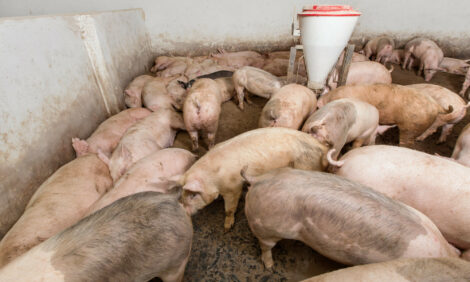



New methods may improve pork quality assessments
In his PhD thesis, Paweł Piotr Suliga has developed new methods to assess pork meat quality. His methods could potentially outperform existing monitoring tools, tackling the growing quality issues in the meat industry.In his PhD thesis at the Norwegian University of Life Sciences, Paweł Piotr Suliga has developed new methods to assess pork meat quality. His methods could potentially outperform existing monitoring tools, tackling the growing quality issues in the meat industry.

Pork production and demand have been steadily increasing globally the past decades. According to the Food and Agriculture Organization of the United Nations (FAO), pork meat production was estimated to rise by 11.2% in 2021, equating to 122 million tons compared to 2020.
However, the global push for rapidly growing animals has raised concerns about genetic variation and the predisposition for meat defects. While this shift has improved certain meat attributes such as low fat content, this can also reduce flavor.
“Meat quality abnormalities have emerged as a costly problem for the industry,” PhD candidate Paweł Piotr Suliga explains.
These abnormalities, linked to various underlying causes, manifest as inferior pork quality characterized by loose texture, disorganized structure, unattractive pale appearance, and excessive surface fluid. It is also known as ‘PSE’; pale, soft and exudative-like ham.
“Ham defects can be present in up to 20% of processed hams, causing great economic loss,” he says.
Finding new methods
In his PhD thesis, Suliga has investigated an interdisciplinary methodological approach can reveal new insights about pork ham quality defects detection and its underlying characteristics.
The study introduces innovative methods that may be superior to current quality monitoring tools.
He has utilized two methods, bioimpedance testing, a technique that measures how biological tissue reacts to electric currents, and histopathology, a method for studying changes in tissue due to disease.
Genetic detection in the future
Suliga’s key findings suggest that the way pork tissue reacts to electric currents is closely related to meat defects. This is a new technique for examining meat quality and differs from traditional ones.
His new methods of studying diseases in the tissue solidified the link between PSE-like defects and sudden muscle tissue breakdown, also known as ‘acute myodegeneration’.
“The new methods may be superior to current quality monitoring tools," he said. “In addition, the results can potentially lead to the identification of genetic markers associated with PSE-like meat in the future,” he says.
Future research activities, like tracking changes in genes and improving the identification and description of defects, could be improved by combining these new methods into a more complete strategy.
High quality meat at a low cost?
Suliga has also assessed fresh pork quality. Alongside the high demand for pork products, there has been a continuous rise in pork meat quality research in the last two decades. The challenge lies in providing both affordable and high-quality meat.
Efficient meat production often leads to better-quality products, but the concept of quality is complex. It refers to functional quality, which encompasses desirable attributes like tenderness and flavor, and conformation quality, which involves meeting product specifications such as weight and fat content.
When assessing fresh pork quality, traditionally used parameters include pH, color, water holding capacity, structure, and firmness. Desired pork meat quality is characterized by meat that is neither dry nor excessively moist. It should exhibit a red color and a tender texture without being too soft or too firm.
“In summary, pH, water holding capacity, and color are crucial factors in determining the final quality of meat,” Suliga says. “These characteristics can be significantly influenced by various factors.”
These include pre- and post-slaughter handling, genetic predisposition, stress, and diet. However, when physiological quality formation is disrupted, it can result in defect formation, e.g., PSE-like meat.








